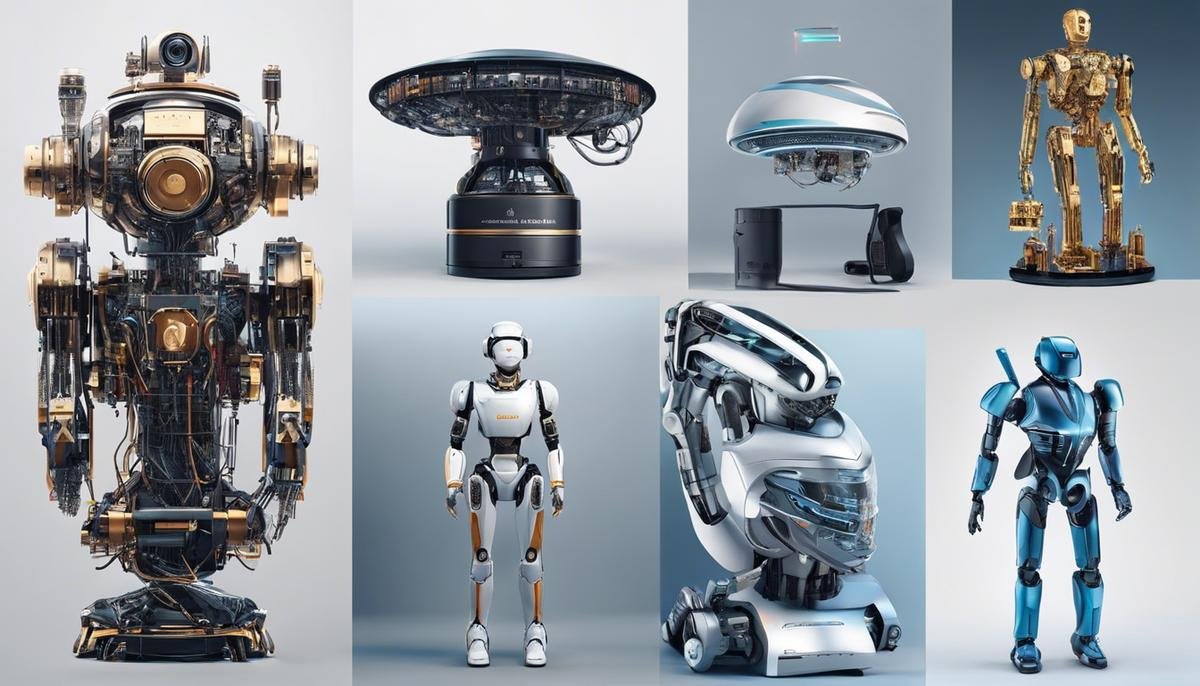The realm of artificial intelligence stands as one of the most vibrant and rapidly evolving sectors of technological advancement, captivating the imagination of the global community. Determining which AI holds the title of being the most powerful is an intricate task that necessitates a comprehensive understanding of the multifarious criteria that define AI prowess. From the formidable computational capabilities that enable them to tackle an ever-widening array of tasks to the complexity of problems they can solve and the sophistication of their learning algorithms, the potency of AI systems is a confluence of factors. In this exploration, we endeavour to unwrap the layers that constitute AI power, assessing not just the raw performance but also the practical scalability and adaptability that determine a system’s real-world efficacy. Join us on this journey as we unravel the nuances of AI power and the titans that shape this digital age.
Criteria for Evaluating AI Power
Title: Assessing the Potency of Artificial Intelligence: A Pragmatic Approach
The burgeoning advancement of artificial intelligence (AI) beckons a quintessential question: How do we accurately determine the ‘power’ of such systems? As researchers immersed deeply in the contemplation and development of AI, the quest for understanding its capabilities is not only intriguing but imperative for both its efficacious application and the foresight of its potential impact on society.
Artificial intelligence embodies a plethora of systems designed to mimic cognitive functions such as learning, problem-solving, and decision-making. To elucidate the ‘power’ of AI, we must adopt a multifaceted approach that hinges upon various metrics and benchmarks tailored to specific functionalities and contexts.
One pivotal determinant of an AI system’s power is its ability to process and analyze data—at a speed and scale beyond that of human capability. This is frequently measured by examining the system’s computational throughputs such as teraflops (trillions of floating-point operations per second), which is a salient indicator of how swiftly the AI can perform complex calculations.
Another key metric is the accuracy and sophistication of pattern recognition, which is fundamental in applications from facial recognition technologies to predictive analytics. Here, we gauge the precision with which AI algorithms can discern and learn from patterns within data sets. Superior AI systems boast the facility to continuously improve their accuracy through mechanisms like deep learning, which emulates the neural networks of the human brain.
Furthermore, the adaptability and autonomy of an AI system also serve as critical measures of its power. The degree to which AI can operate without human intervention, swiftly adapt to changes in its operating environment, and learn from its interactions presents a profound insight into its capabilities.
Additionally, evaluating an AI’s performance against standardized tests and benchmarks within the academic community, such as the Turing Test or game-based challenges like chess or Go, provides a quantifiable means of assessment. Success in these arenas signals an AI’s proficiency in human-like reasoning and strategic thought.
Finally, the real-world impact of AI—its ability to enhance productivity, accelerate innovation, and solve complex problems—is perhaps the ultimate testament to its power. When an AI system translates its theoretical prowess into tangible benefits, it’s not merely a testament to its ‘power’, but also a reflection of its utility and transformative potential within society.
In conclusion, determining the power of AI involves a comprehensive evaluation of computational speed, accuracy in pattern recognition, adaptability in varied environments, performance on standardized tests, and the palpable impacts it has on real-world challenges. These dimensions collectively underpin the nuanced appraisal of AI systems’ capabilities, a thrilling domain of inquiry for those engrossed in this scientific odyssey. For AI is not just about the technology itself, but how it augments human ability, redefines possibilities, and shapes our future in the interconnected tapestry of innovation.

Leading AI Models in Computational Power
Artificial Intelligence (AI) models signify a prodigious leap forward in computational might, defining the cutting edge where technology meets cognitive science. To appreciate which models reign supreme in the domain of AI, one must examine the components that coalesce to form the zenith of digital intellect.
Among these paragons of artificial intellect, Transformer-based models represent an apogee. These architectures, which include trailblazers like GPT (Generative Pretraining Transformer) and BERT (Bidirectional Encoder Representations from Transformers), have rewritten the landscape of natural language processing (NLP). They excel in processing vast amounts of data, learning nuanced language representations that enable them to generate text, translate languages, and answer questions with a near-human-like aptitude.
Deep learning convolutional neural networks (CNNs) have proven exceptional in visual comprehension tasks. These networks, designed to mimic the human visual system’s architecture, have achieved formidable prowess in image recognition and classification. AI models like ResNet and Inception have made significant strides in medical imaging diagnostics, autonomous vehicle navigation, and various forms of visual data analysis.
Reinforcement Learning (RL) models, exemplified by systems such as AlphaZero and its derivatives, have demonstrated proficiency in decision-making tasks. By mastering complex strategy games like Chess, Go, and Shogi without prior knowledge except the game rules, these systems showcase an ability to learn and devise strategies through trial and error, an approach resonating with autonomy akin to intelligent organisms.
Hybrid models that combine elements of deep learning, reinforcement learning, and evolutionary algorithms have also emerged at the forefront. These systems leverage the strengths of each approach to create a more robust and versatile AI. The synergy found in these multi-faceted models paves the way for solving more diverse and complex problems that single-method AI might find intractable.
At the pinnacle, we find AI that can integrate cross-disciplinary knowledge and excel in multi-modal tasks, showcasing an extraordinary degree of general intelligence. Systems such as OpenAI’s DALL·E, which generates images from textual descriptions, combine language understanding with visual creativity, indicating a move toward more general AI capabilities.
Furthermore, the implementation of AI in quantum computing, although nascent, looms on the horizon as the next frontier of computational potential. Quantum-AI hybrids promise to tackle problems fundamentally intractable for classical computers by harnessing the peculiar properties of quantum mechanics.
In conclusion, the apex of AI is characterized not only by raw computational power but also by sophistication, versatility, and the semblance of understanding akin to living intelligence. Contemplating the ever-evolving landscape of AI, one witnesses a constellation of models each formidable in its own right, yet perpetually advancing toward the shared goal of artificial general intelligence. With each stride and each breakthrough, these models redefine possibilities, auguring a future ever more intertwined with the fabric of intelligent computation.

Impact and Ethical Considerations of Powerful AI
Delving deeper into the societal and ethical aspects of advanced artificial intelligence systems, it is essential to acknowledge the profound influence these technologies wield upon contemporary society. As AI systems burgeon in complexity and capability, they increasingly edge into domains traditionally reserved for human expertise. The ramifications of this technological encroachment surface in various facets of society, stirring ethical dilemmas and inciting intense debates regarding the appropriate scope of AI application.
A primary societal concern surrounds the impact of AI on the labor market. Automation driven by AI could render certain job categories obsolete, leading to economic stratification and augmented unemployment among less skilled workers. The ethical considerations here relate to the responsibility of deploying AI within the workforce while ensuring social safety nets and retraining programs for those displaced by technological progress.
Privacy is another domain where the potency of AI intersects with ethical considerations. The data-hungry nature of many AI systems raises questions about the consent, security, and ownership of personal information. With AI’s advanced analytic capabilities, even anonymized data can sometimes be re-associated with individuals, thus encroaching on personal privacy. It is imperative to develop robust privacy standards and transparent data governance protocols to mitigate these risks.
The advent of AI also has broad implications for legal and moral accountability. When an autonomous system makes a decision leading to unintended harm, delineating liability becomes complex. The opacity of certain AI decision-making processes exacerbates this issue, as it can be arduous to discern why a particular outcome was reached. Here, the ethical quandary nestles in ensuring that AI systems are transparent, explainable, and follow established norms and regulations.
AI’s influence extends into the moral fabric of society, prompting discourse on what behaviors should be programmed into AI, particularly concerning combat or surveillance roles. Ethical AI necessitates the encoding of moral guidelines, but whose morals take precedence remains hotly contested. As AIs begin to bear quasi-social entities’ characteristics, crafting and adhering to a universal ethical framework becomes paramount and yet, complex given the global diversity in cultural and ethical norms.
The potency of AI systems potentially impinges upon human agency and decision-making. Dependence on AI for critical decisions may lead to a scenario where humans defer to machine judgment, possibly undermining the development and exercise of human critical thinking skills. Maintaining a balance between leveraging AI’s strengths and preserving human autonomy constructs an ethical tightrope that society must navigate with deliberate care.
In conclusion, the societal and ethical ramifications of highly powerful AI systems are broad and deep-reaching. It is incumbent upon researchers, developers, policymakers, and society at large to engage in ongoing, nuanced dialogue about the wise stewardship of AI. This discourse must balance AI’s transformative potential against the safeguarding of human values, equity, and societal harmony. It is through such deliberate and considered action that AI can be directed towards the betterment of humanity while averting the pitfalls posed by its unchecked ascent.

As we stand on the brink of an AI-augmented epoch, it is imperative to reflect upon the sweeping changes that powerful artificial intelligence systems herald for our collective future. While they carry the promise of revolutionizing industries, streamlining daily tasks, and unlocking new realms of intellectual pursuit, they simultaneously cast shadows of ethical concerns that must be navigated with conscientious deliberation. The synthesis of such extraordinary technological capabilities with a vigilant ethical compass will chart the course for an AI-powered landscape that honours our deepest values and aspirations. It is our privilege and responsibility to steer this voyage, ensuring that the crescendo of AI innovation harmonizes with the symphony of human progression.




